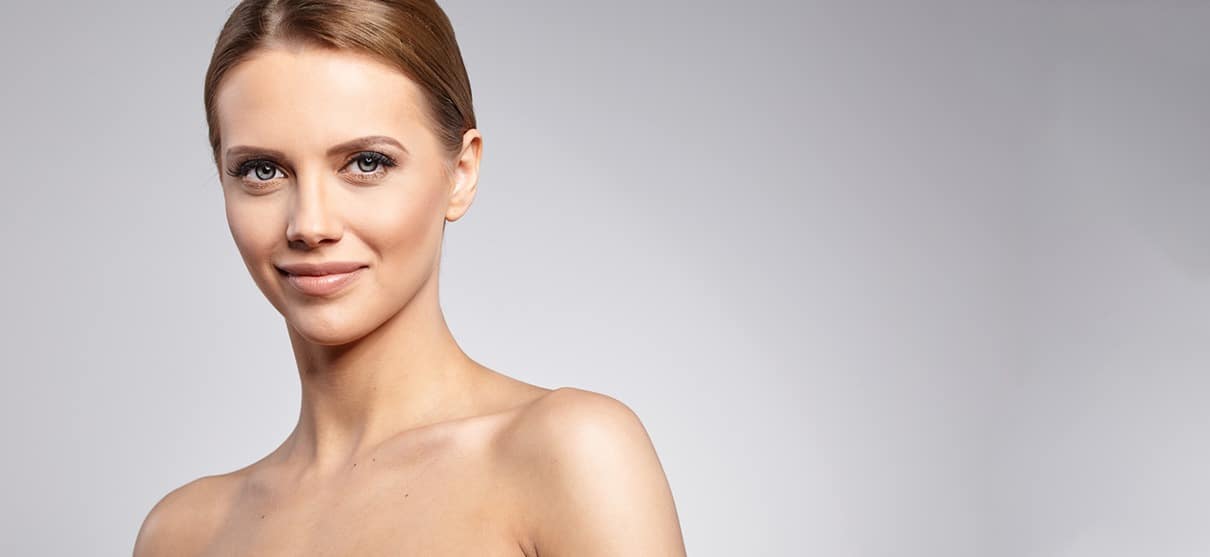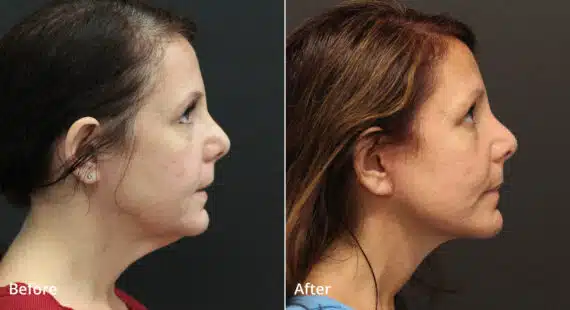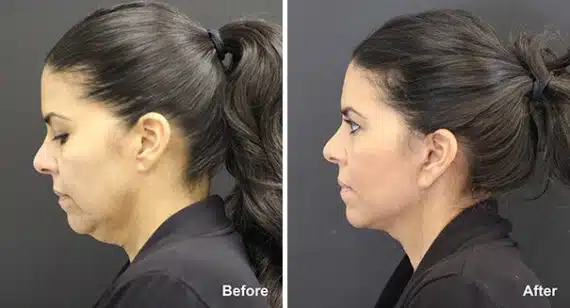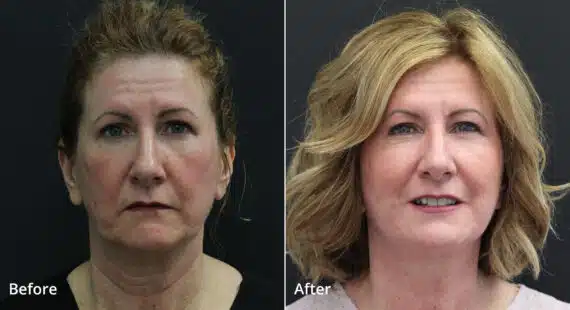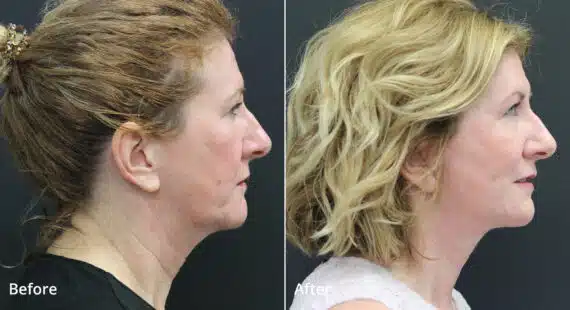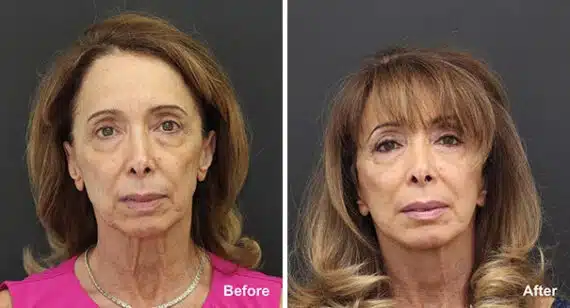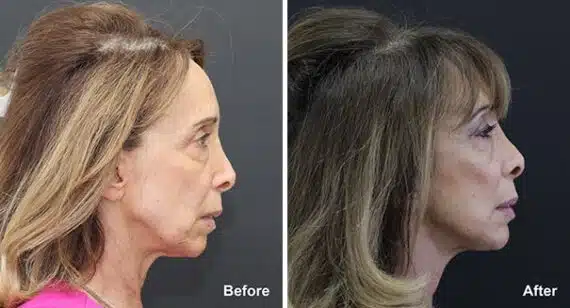Autologous fat transfer (also referred to as fat transfer) is a method of facial rejuvenation. This procedure involves the removal and relocation of the patient’s own body fat to plump up an area that has lost volume after aging. Autologous refers to the use of one’s own fat cells. This is a cosmetic procedure that surgeons can use to rejuvenate the face, augment the cheeks or lips, or correct problems such as hollowness around the eyes. Fat cells can also be useful to augment facial scars from acne or trauma, and improve skin texture and firmness. Dr. Nicole Schrader has been performing this cosmetic procedure for many years with great success.
Who is a good candidate for fat transfer?
In general, fat transfer candidates are adults who wish to diminish or eliminate the appearance of wrinkles, creases, furrows, smile lines or frown lines, marionette lines, or depressions in the face. The safety of the autologous fat transfer technique ensures that there are no restrictions related to allergies. However, at your initial consultation with Dr. Schrader, you should be sure to disclose all of your medical history and current habits such as smoking and use of blood-thinners, medications or supplements.
Facial Fat Grafting before & after photos
* All patients are unique and individual results may vary.
Are there any preparatory procedures prior to fat grafting?
Dr. Schrader performs the majority of the fat grafting procedures under local anesthesia only, not general anesthesia that would put the patient to sleep. She performs it as an outpatient procedure at her Princeton office.
What is the advantage of fat grafting vs filler injection?
Fat grafting gives a very natural looking result. The harvesting typically yields a greater volume of material for injecting, and the results obtained from fat grafting tend to be longer lasting than filler injections. Because the fat is from the patient receiving the injection, there is no risk of rejection.
* All patients are unique and individual results may vary.
Is fat cell harvesting different from regular liposuction?
Yes, the harvesting techniques for the two procedures are different. When we harvest fat cells for the purpose of fat grafting, a gentle, manual method is required. No lasers are used. This method of careful harvesting secures the viability and ensures that this tissue preserves the regenerative cells present in the harvested fat.
What is recovery like following a facial fat sculpting procedure?
Recovery following fat grafting is relatively fast and easy compared to other cosmetic surgery procedures. There may be some bruising and swelling at the site of the fat harvesting, which are manageable with ice and an over the counter pain reliever. Most patients can move about and engage in normal activities the same day of the injections.
* All patients are unique and individual results may vary.
Are the results permanent after Facial Fat Grafting?
There are many factors that come into play that determine how long fat grafting lasts. Your body naturally absorbs fat. The average absorption rate is around 5%, and may occur during the first six months. Some patients may require a second touch up procedure. The effects of facial fat grafting are very long-lasting – it lasts significantly longer than cosmetic injectables. Aging is an ongoing process, and you can always repeat fat grafting if you need it. The average patient receives 1-2 treatments to achieve the desired results.
What else is significant about fat cell transfer?
Physicians and scientific research have demonstrated that the frequency of growth factors in fatty tissue can be 2500 times greater than the frequency of similar cells in bone marrow. These cells have been used for therapy of chronic diseases.

